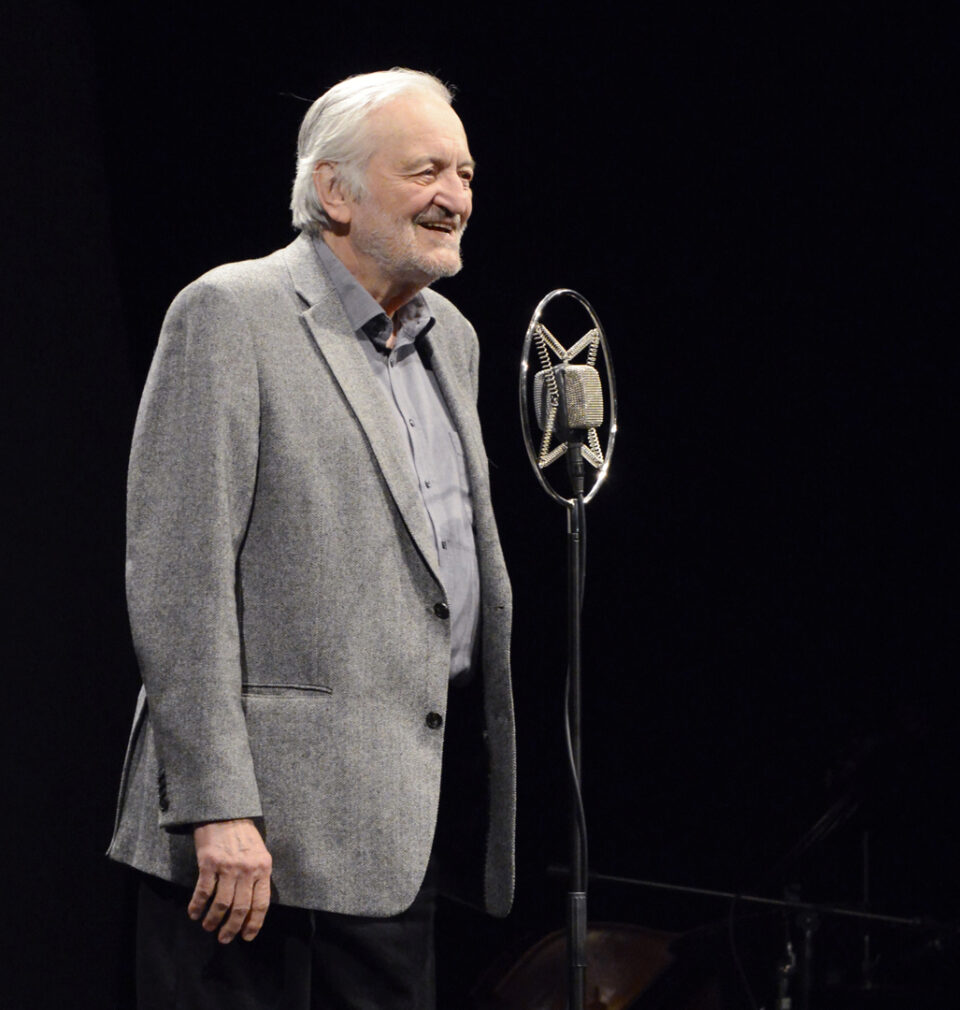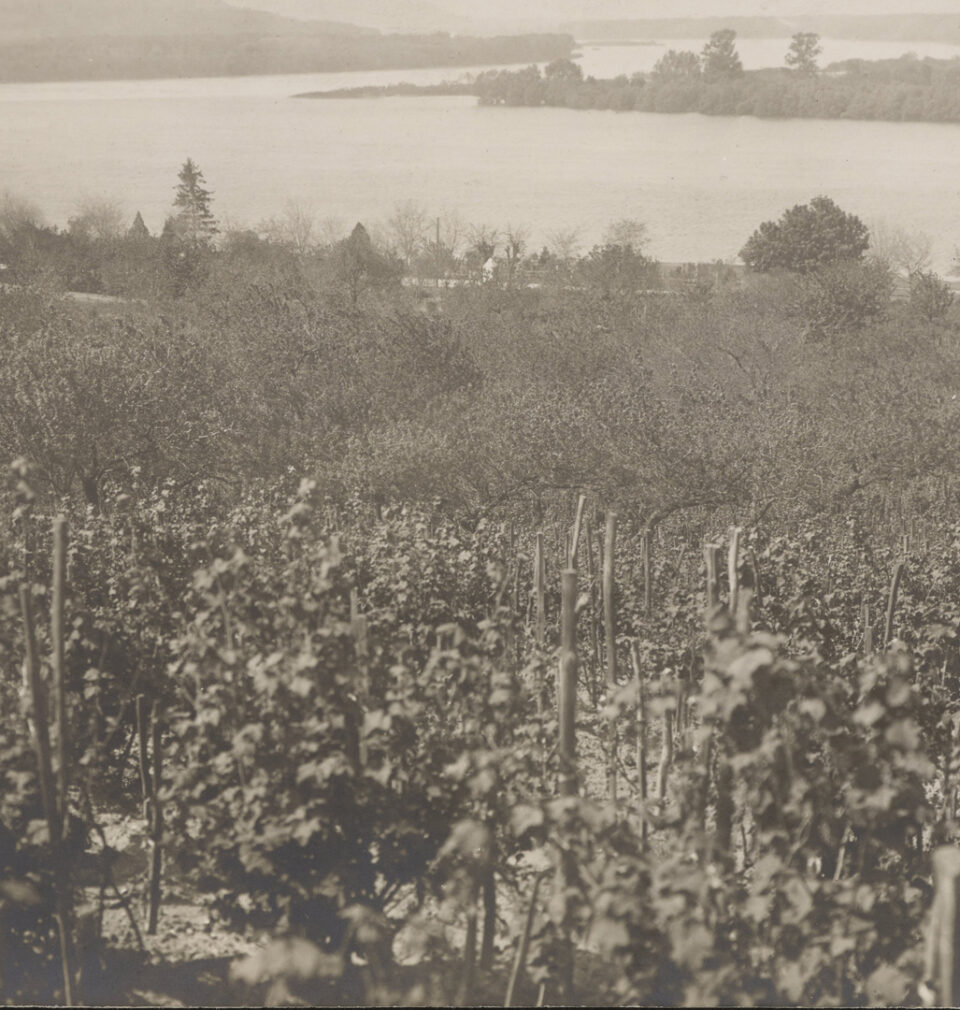
Słowacja - Slovensko - Slovakia
With a Pinch of Salt
Publication: 14 October 2021
TAGS FOR THE ARTICLE
TO THE LIST OF ARTICLESLike many of our artists, I’ve always felt a strong connection with Czech culture, so I was not in favour of the separation. I simply saw it as a loss. Slovaks, however, had always strived to achieve the status of an entity.
Andrzej Jagodziński: You made your debut in the 1960s. By all accounts, it was a favourable period in the culture of Czechoslovakia, although views on this matter are divided. Some artists have claimed that it was a “golden era” while to others the climate was only slightly less stifling than before. What is your opinion in this regard?
Milan Lasica: I’m more inclined to agree with the latter. Our experience of the 1960s was different from that of our friends in the West. To some extent, we saw the decade as a thaw period, however the experience I have gained so far makes me characterise it as merely better than the 1950s and the 1970s. The 1960s gave us the opportunity to breathe a little bit easier, but it did not bring us freedom. After all, during that period, my long-time acting partner Július Satinský and I also faced various problems with stage censorship, as our plays were banned and our performances hindered. Most certainly, it was not what you would call paradise, even though in 1969, things worsened.
A.J.: It was the 1960s, however, that witnessed the rapid development of literature and cinema. It was then that small theatres, jazz and rock bands, as well as different art groups emerged spontaneously. The cultural offer was very diverse…
M.L.: Indeed, many little theatres came into existence, and almost every town had an amateur theatre group. It was triggered off by the 20th Congress of the Communist Party of the Soviet Union (1956) during which Khrushchev revealed the crimes committed by Stalin – referred to as “mistakes and perversions” at that time. Seemingly, nobody guessed that this would begin the end for Communism – although more than 30 years would pass before the regime finally collapsed. The “thaw” which followed turned out to be impossible to break, despite many such efforts undertaken towards the end of the 1950s and also later, including the intervention of Warsaw Pact troops in 1968.
A.J.: The comedy duo Lasica and Satinský are a Czechoslovak phenomenon. In prewar Prague, comedy partners Voskovec and Werich and their Osvobozené Divadlo enjoyed immense popularity, as did the duo Werich and Horníček after the war, but it seems that they have remained unknown outside the Czech Republic and Slovakia. Were you and your colleagues inspired by them?
M.L.: Comedy duos are largely part of the Czechoslovak, or, should I say, Czech tradition, but the genre was also known in other countries, it is enough just to mention the American duo Laurel & Hardy, or Pat & Patachon of European renown. Hungary also had its comic duos, but in Slovakia, Satinský and I were in fact pioneers in this field. Voskovec and Werich were obviously an inspiration, but they’d performed before the war, so we never saw them live; we only saw them in films. However, we were directly influenced by Prague’s ABC Theatre run by Jan Werich, where a remake of a production by Osvobozené Divadlo was shown and Werich performed in a very good duo with Miroslav Horníček (Werich was later replaced by an equally good Miloš Kopecký). They were our chief source of inspiration, but Satinský and I were both very cooperative and we complemented each other fantastically – as this is the only way to make a creative author duo. And as we were very young (I was 19, Satinský 18), we worked together until Satinský’s death, ten years ago.
But there were also many other inspirations which we drew on. You come from Poland, so I’m first going to tell you about Sławomir Mrożek. His outlook on life and his special sense of humour, as well as his style all influenced me immensely. When I was 23, I staged his one-act play Striptease at drama school, and in the spring of 1989 (which marked the death of communism), we staged The Emigrants which we played for ten years. The author himself came to see it in Prague, in the late 1990s, and it was a great experience for me.
A.J.: I was the director of the Polish Institute in Prague then, and I invited Mrożek, and accompanied him and his wife on the visit. Shall I add that, after the performance, he looked visibly moved and said that it was the best staging of The Emigrants he’d ever seen. Obviously, he doesn’t talk very much, and when he does he’s always frank…
M.L.: How nice… I also remember I was strongly impressed by his novel Escape to the South, even though I’d read it a long time ago; many other works by Mrożek were equally enjoyable to me. We had more sources of inspiration, apart from these Czech and Polish ones. I was really influenced by Ilf and Petrov’s prose, which seemed very relevant, since despite the fact that they had been written much earlier, the socio-political situation in which we lived was actually quite similar.
A.J.: Just like the other Czech duos we’ve talked about, your work with Satinský has turned out extremely difficult to pigeonhole. It is neither “pure” theatre nor “pure” cabaret, but something between the two genres, not to mention your scripts were original and your acting was one-of-a-kind. Isn’t it uniquely Czechoslovak?
M.L.: Exactly. We were never interested in classical theatre forms. I’d say we did something that Czechs would refer to as text-appeale, namely, we only presented our own stuff on stage, we’d never use a text by other people. That’s why we never impersonated other characters; we didn’t play dramatic roles. We simply presented our real-life personas. It required a special type of acting which we could only master by performing very often. There were times we would play almost every day, and thus we gained more experience.
A.J.: To what extent were your shows improvised?
M.L.: Good question. The way in which we presented our texts or dialogues did evolve. When we started out we were very bold or even brash, and so, before a performance, we’d only write down some ideas we wanted to talk about, and then we would go up on stage and totally improvise it. But then we agreed that it would be good to prepare some lines in advance, because the improvisations were impossible to repeat. In the end, we wrote everything and we limited the improvisation to minor alterations depending on the dynamics of a particular performance. Sometimes, when the alterations worked, we would include them in new versions of the script. In other words, our scripts were slightly modified and improved all the time. However, towards the end of our work together, we got back to 100 per cent improvisation, but it only applied to our shows for the radio which were recorded and edited. That was the way in which the 10-episode radio series The School of Life was made, in which we explained how you should behave after your flat’s been broken into, or when visiting a brothel, etc. Our dialogue was fully improvised, which we could afford owing to the long-time experience of working together.
A.J.: The 1960s were followed by the period of “normalisation”, and I know it was not an easy time for you. Then again, it must have been a great inspiration for satirists, as we no longer encounter so many curiosities and absurdities, today.
M.L.: I would have given up that inspiration without regret if it had been possible. It was such a huge intervention into our professional and personal life that “elimination” might perhaps be a suitable word here. First, we were fired from the theatre in Bratislava overnight. Then, by a miracle, it seems, we were allowed to perform in Bohemia and Moravia for two more years, but that also came to an end. When we were thinking about what we should do next, we got a semi-official proposal to work with the Bratislava Operetta company. As hard as it was to imagine anything more distant from what we had been doing thus far, we had no other choice. We spent several years there, and we even managed to do some shows of our own. Instead of writing stuff, however, we adapted other people’s texts which we thought had some value. We could only present our own texts to our audience again 17 years later. I’m not ashamed of that period, and it was not entirely wasted, but then it certainly wasn’t what we had aimed for.
A.J.: We have been free for more than 20 years now, and yet – also among artists – there’s still some nostalgia for that period when, allegedly, the state was protective and it generously supported the arts and culture. Do you ever feel it, or, quite the opposite, as a “cultural entrepreneur”, are you content?
M.L.: I couldn’t say that as a “cultural entrepreneur” I don’t have problems, but then I was always prepared to face them. This nostalgia is a very interesting phenomenon; it seems to me that it affects more and more people, even those who never experienced Communism. And those who survived it recollect their youth and social guarantees. They say, for example, that there was no unemployment problem, but they forget to mention the price they had to pay, and also that work was compulsory. They also say that health care was free, even though the cost of health insurance was deducted from our salaries. Logically, people only remember nice things, and reject unpleasant memories.
A.J.: How did you feel about the separation of Czechoslovakia?
M.L.: Like many of our artists, I’ve always felt a strong connection with Czech culture, so I was not in favour of the separation. I simply saw it as a loss. Slovaks, however, had always strived to achieve the status of an entity. In 1969, owing to the Prague Spring (1968), one could say, the federation was finally secured and recognised as a great triumph. Paradoxically, 20 years later, after the collapse of Communism, it was the federation that became our worst enemy. However, shortly after the Velvet Revolution, everybody aimed at separation. Naturally, people see and describe it from different perspectives (to some, the father of the separation was Václav Klaus, whereas to others it was Vladimír Mečiar), but the federation was divided into two small countries. From a commercial point of view – also to artists – it was a change for the worse, because the market shrank. Fortunately, however, the change was not accompanied by any sort of tragedy. Interestingly, at the beginning, things did not seem favourable in our country; Vladimír Mečiar’s regime and the Meciarist ideology did not turn us where I’d wanted, namely, to the West, but to the East. Luckily, however, they never succeeded.
A.J.: Can you see anything positive about the separation?
M.L.: This should perhaps be discussed by economists. Before the separation endless debates had taken place, of whether Czechia was subsidising Slovakia, or maybe the other way round. If it wasn’t for the separation, it would probably be a key topic even now. Instead, after the separation, Czech and Slovak politicians completely stopped controlling each other, money-wise. Working in the theatre, I didn’t think that we were restricted or manipulated by the Czechs at all, but I’m sure a lot of people here felt that they were hindered by Prague.
A.J.: What I meant was awareness rather than anything else… I’m under the impression that having your own state, defeating “Meciarism” on your own, and then the successful transformation and introduction of the euro has had a positive impact on the social mentality. This manifests itself in younger generations, in particular, as they have great self-confidence.
M.L.: It’s very important that people have even more confidence and more self-esteem. I believe that, despite what you’re saying, we still have some completely unfounded inferiority complexes; as well as some flaws we should get rid of as quickly as possible. Here’s a concrete example: the services sector as a whole. It may sound like trite platitude, but this sphere is extremely important for the country and its international image. The principle which lifted Austria out of poverty was as follows: everything should be done to make tourists eager to return. In my country, I’m often under the impression that we serve our visitors in a way which drives them away for good – even though we see ourselves as the most hospitable nation in the world.
A.J.: How do you feel about being European?
M.L.: Fantastic! It’s amazing that you no longer need to show a passport on the border, and fear that the customs officers might find an error. Certainly, many people will say that they never travel abroad, so they don’t care about it at all. But that’s how liberty works really. George Bernard Shaw said: “Liberty means responsibility. That is why most men dread it.”
A.J.: Is what you find irritating in the world a source of your creative inspiration?
M.L.: No. Well, maybe some such inspiration could be found in the column I’ve been writing regularly for ten years. But even there I look at the world as a humorist rather than a political scientist. As far as theatre is concerned, in many people’s opinion Satinský and I satirised the world, which in fact had not really been our aim. We were into a type of humour that originated in Dada, nonsense and the absurd – rather than making fun of current affairs. However, it was often the case under Communism that what you said on stage became political, despite the fact you didn’t mean it at all. That’s what people wanted; often it was enough to go on the stage and say “Good evening”, to instantly get applause from the audience.
A.J.: What humour do you identify with most? British?
M.L.: We started out doing student comedy stuff, which, in fact, originated in nonsense humour. We did it for quite a long time, as the audience loved it. I’ve already mentioned the Russians, Ilf and Petrov, but Gogol has also been important to me. As far as my Western heroes are concerned, I’d mention humorist James Tarber and French comedian Jacques Tati, the latter of whom did not perform a lot but was very inspiring. Let alone such brilliant Italian comedy actors as Alberto Sordi or Vittorio Gassman – talent like theirs emerges once every 150 years, but we had the good fortune of admiring them in films…
A.J.: How important have the issues of the Slovak mentality and various national myths or stereotypes been in your work?
M.L.: I’ve always been interested in them, and Satinský and I even wrote a play about it called Our Friend René. It was an analysis of the Slovak national character, but a week before the premiere, it was confiscated by the censors – and it was staged only after the fall of Communism, ten years later. I think this play was where we managed to fully dissect the Slovak issue, and it’s probably my favourite of everything I wrote with my colleague.
A.J.: What is the opposition between rural and urban cultures in Slovakia like today?
M.L.: My friend Tomáš Janovic said that the Communists wanted to eliminate the differences between the rural and the urban but, at the same time, they eliminated the differences between the cities. This opposition used to be extremely significant, because our culture is very rustic by nature; it originated in rural areas as there were only a few cities, or, in fact, small towns. I believe it was only our generation that began creating the culture that conveys the urban character. Because we were already born here; we did not come to cities from the country like most Slovak writers who would, in a way, keep the countryside in their hearts for their whole lives. We, on the other hand, perceived the obviously gorgeous countryside as something distant and foreign – almost like tourists, I would say. I recently turned 70; most younger artists have been connected with cities and so it is in cities that culture has been created. Today, the countryside is mainly what it used to be for me: a weekend getaway.
A.J.: Is there anything special about the Slovak sense of humour, in comparison with Czech humour, for example?
M.L.: I don’t really like to talk about a specifically Slovak, Czech, or English sense of humour. It doesn’t seem to work like that; it’s more of an individual thing that’s shaped by the community. But then one most certainly can talk about Slovak humour as a historical or literary phenomenon. It had never been our strong point; we didn’t have too many good comic and satirical writers in the 19th or 20th centuries, or earlier. In this respect, we could not rival the Czechs – they had Hašek, for example, and we didn’t have anyone like him (perhaps because he was a typical “product” of the city). In the mid-20th century, there was still only one type of humour in Slovakia, namely, so called “folk storytelling”. I don’t know whether you’ve heard about it in Poland – a man, usually dressed in folk costume, would get on stage and tell funny stories. Naturally, the stories reflected the character of a storyteller’s native place. In fact it was similar to what has become trendy today, that is, stand-up comedy. This phenomenon was very popular in Slovakia until the 1960s and it was practically our only tradition of theatrical comedy. That aside, in the early 19th century, we had the talented comedy writer Jan Chalupka, but there were no theatres in my country then, so, initially, his work could not reach a wider audience, and it was only much later that his plays emerged in Slovak theatres and performed until today. Essentially, the tradition was rather poor – solely rustic and rural, just like the country as a whole. It was only our generation that introduced a different type of humour, one which was rooted in the urban environment and, as regards the styles and subject matter, comparable with what had already existed in other countries near or far.
A.J.: In the early 20th century Bratislava was still a multinational and multicultural city inhabited by Slovak, Hungarian, Jewish, and German people. I had always known it, but a year ago I read in The Perished City that Slovaks made up less than 20 per cent of the population of Prague during that period.
M.L.: Indeed, it was a multinational and multicultural city which, after 1918, became the capital of Slovakia only by chance, it seems. The town of Martin in mid-Slovakia was the symbol of the Slovak element, of the cultivation of national awareness and our identity. It even seems possible that the decision was taken as an insult by people from that area, as, even in 1919 the Slovak population in Prague was a straight minority, and its position in the city was insignificant. They were chiefly small vineyard owners, market sellers and craftsmen. In the 1920s, the city began to “Slovakise”, albeit aided by the Czechs – for example, the National Theatre was established with Czech and later also Slovak actors; various Slovak periodicals were launched. Importantly, however, just after the war, it seemed quite possible that Bratislava might become a “free city”, independent from its neighbouring states, and with a large river port. It had been a holiday resort before, mostly frequented by inhabitants of nearby Vienna and Budapest. One could go there with your girlfriend and hide in a discrete pension for two or three days.
A.J.: Has something of that multiculturalism survived?
M.L.: I don’t think so, or maybe it has, but to a very small extent. However, in recent years (for it was impossible under Communist rule), various initiatives to restore what may still be restored have emerged. For example, the monument to Maria Theresa which stood in Bratislava, and which even I didn’t remember because it had been replaced with a statue of General Milan Štefánik, has been reconstructed. The latter was also removed by the Communists, even though he was not a tyrant at all…
A.J.: In Europe, monuments don’t seem to last very long …
M.L.: Oh yes, it’s typical. We should only erect monuments to animals – birds or horses – as they don’t bother anyone, no matter how long they’re there. Most things, however, can not be brought back anymore. Even those which I can still remember, namely, the old settlements outside the walls of Bratislava Castle, 70 per cent of which was destroyed in the late 1960s and early 1970s, during the construction of the Bridge of the Slovak National Uprising over the Danube. Despite some social protests the authorities didn’t change their decision. The bridge was planned to symbolise the new era, and counterbalance the feudal castle and the nearby cathedral.
A.J.: Do you really think they meant to destroy the memory? Perhaps it was prompted by ignorance or someone’s stupid ambitions?
M.L.: I really do, although nobody would admit to it. Besides, such things didn’t only happen in Bratislava. I’ve just said that the centre of Slovak national identity was Martin (formerly Turčiansky Svätý Martin). In the 1950s, the Communists deliberately built many factories (heavy, engineering, armaments industries) in Martin to enforce proletarianisation and change the city’s tradition. Slovakia had been an agricultural, rural country, and it didn’t have the working class, so they had to create it for ideological purposes. Thus, Martin was proletarianised and ruined as a stronghold of Slovakness, and many other towns and cities met the same fate. Bratislava, however, suffered the most, even though it hadn’t been so very Slovak – but the Communists probably meant to erase the Austro-Hungarian history and “foreign” traditions in the city. The entire Jewish Quarter was destroyed, for example…
A.J.: …which had survived the war mostly unscathed.
M.L.: Indeed. I can still remember it. I used to go there when I was a boy. It consisted of small buildings with shops which were closed, their doors and windows bolted, but still there…
A.J.: How can one restore the historic memory of Bratislava today? Virtually? Through literature?
M.L.: It would certainly be advisable to restore it, as its eradication was deliberate. When I was a first-grade pupil, in 1946, half of my colleagues bore German surnames, and a third of them – Hungarian. Today, you won’t find one German in Bratislava, and most Hungarians live on Rye Island, east of the city. In this way, the Slovakisation of Bratislava has turned out to be successful, although the culture of the place has suffered deep impoverishment.
A.J.: Can one still discuss the cultural specificity of Central Europe, or does it belong to the past?
M.L.: I might be exaggerating but I think only an Atlantis is left of the Central Europe we talked about so much only 20 years ago. We can still remember it; sometimes from under water a shape will emerge that we can’t really recognise, but the feeling grows more elusive. The real, vibrant Central Europe died with the Austro-Hungarian monarchy, it seems, even though, in some of our cities, its traces have remained.
Translated from Polish by Paweł Łopatka
Copyright © Herito 2020




